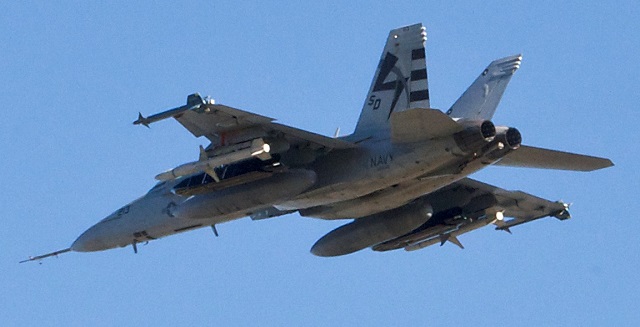The US Navy’s newest and most sophisticated anti-ship cruise missile is a step closer to being fielded as standard on the Boeing F/A-18 Super Hornet after the first captive-carry flight with a weight- and form-representative payload over Naval Air Station Patuxent River in Maryland.
The flight marks the start of F/A-18E/F airworthiness certification for the Lockheed Martin-built Long-Range Anti-Ship Missile (LRASM), and follows earlier ground-based load and fit checks at Patuxent River.

Lockheed Martin/US Navy
According to the manufacturer, the Super Hornet carried the programme’s "LRASM mass-simulator vehicle” on the initial airworthiness flight to examine basic flight and handling characteristics of the paired aircraft and munition. Further flights will gather noise and vibration data.
“The flight data acquired validates the LRASM system design and clears the way for the test programme to continue,” adds Lockheed LRASM director Mike Fleming.
Based on the air force’s long-time conventional cruise missile – the Lockheed Joint Air-to-Surface Standoff Missile (JASSM) – LRASM is being fielded as a rapid capability to attack surface ships acknowledging the so-called “anti-access/area-denial” threat posed by China in the Pacific region.
The weapon, which is being procured as a stopgap measure, is designed to discriminate between cluttered potential targets and can hit ships with accuracy despite GPS jamming and electronic attack. The navy aims to field LRASM first on the Boeing B-1B, in 2018, and the F/A-18E/F, in 2019.

US Navy
Source: FlightGlobal.com



















